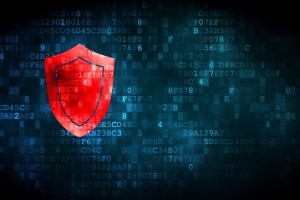
Protecting your company machines from malware, viruses and adware today, can save you a lot of time, money, and headaches down the road.
Malware, adware and viruses are common infections that computers and systems of all types are commonly infected with. The severity of the infection depends entirely on the malware that was installed. Some malware packages are more harmful than others, but as a business you have other responsibilities to worry about, like ensuring that your business and customer data is safe from potential data theft and malicious usage. Luckily, there are some very simple steps that can be taken that greatly reduce the risk of data theft and other malicious attacks within your business. Remember, hackers and others with malicious will almost always go for the easiest target, so taking a few simple measures can go a long way toward protecting your business.
1. Install a Quality AntiVirus/Anti-Malware Software Package on Every Machine
The first and most important step is to ensure that every machine within your company uses a high quality antivirus and anti-malware software package to keep the machine safe. There are many available, some available for free online. This basic first step will allow you to scan your computer for current infections and protect your business and machines against future infections as well.
2. Use Real-Time Protection Features
When choosing anti-malware software, it is very important that you choose a software package that offers real-time protection. Many of the anti-malware offerings will allow you to scan your computer to identify and remove current infections, but a smaller number offer real-time reporting. It is important to remember that malware infections can happen at any time while browsing the internet, opening emails, or clicking what appears to be a harmless link. Real-time features let you ensure that your business is protected any time a machine is being used.
3. Require Daily or Weekly Scans and Updates
Once you’ve chosen a software package that meets your needs and offers real-time malware protection, set a company policy regarding daily and weekly scans of your machines. Although daily scans never hurt, some businesses may opt for a weekly scan instead. By ensuring that your machines are regularly checked for issues you can be certain that all machines are clean. Additionally, this will help to further protect computers that are not receiving real-time protection.
4. Teach Best Practices for Opening Emails and Clicking Links
One of the biggest reasons company machines become infected with malware is from employees clicking on links and opening emails that shouldn’t be clicked or opened. One of the easiest ways to infect a machine with malware is to convince the user to download a file on their own. By teaching your employees the best practices for opening emails, browsing the internet and clicking anything that could potentially result in a download.
5. Use Hardware Firewalls
Although most machines running Windows will have their own built in software firewall, it is always a good idea to install and utilize a hardware firewall as well. This helps to ensure all machines that your company uses including linked printers, scanners and computers have a layer of protection against malicious attacks. A reliable firewall will protect your systems against malicious network attacks, exploits, malware, viruses and worms that could result in data theft.
When it comes to malware, viruses and other PC infections, the best step you can take is preventative measures. Ensuring that you have a hardware firewall in conjunction with high quality software solutions on every machine will allow you to ensure that you keep your business machines safe while also protecting your network as a whole.
If you would like to learn more about how you can protect your business from malicious threats, please contact us today to schedule your initial risk-free consultation. We’ll walk you through the process of securing your network, machines, and create a sustainable solution that keeps your business safe.